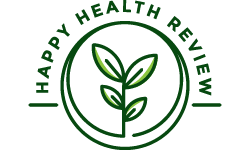Pilates: What You Didn't Know About the Most Effective Exercise

When it comes to pilates, most people think pilates machines, pilates classes, pilates workouts... But what they do not realize is what pilates actually is.
Pilates is a form of exercise and physical movement which was created in the early 1900's by Pilates (hence pilates) and was used by dancers to increase their strength and flexibility.
It has since become one of the most effective forms of exercise for toning muscles and building strength without adding bulk or size (which is why many women opt for pilates). Athletes, dancers, and fitness enthusiasts have recognized it to be an excellent alternative for achieving their goals.
The main reason that pilates exercises are so effective at targeting all areas of your musculature is because they rely body weight rather than external weights.
The goal of reformers is to produce a low-impact exercise that improves core strength, stability, balance, and coordination while also improving posture.
In fact, Pilates is now being proven to help with chronic low back pain, the cardiorespiratory system, sleep quality, and self-perception of personal health and well-being.
According to Pilates, every activity is focused on one fine movement rather than a number of repetitions.
The Pilates Effect on the Body
It's no surprise that the Pilates technique is a full-body workout. "All Pilates exercises are low-impact and usually performed in a slow and controlled manner". explains Jenny, a certified Pilates instructor. “They build core strength, improve joint mobility, and increase coordination.” The majority of workouts also target various muscle groups!
“The work in a regular Pilates mat session comes from supporting your weight and opposing gravity,” according to Jenny. You may also increase the intensity with accessories like a Pilates ball, magic circle, weights, and resistance bands.
Although Pilates and actual weight loss are controversial, it seems to elongate and tone muscles, reduce your waistline, improve posture, and enhance how you move. You may believe that you've lost weight while appearing slimmer in your clothes.
Core training at Home
The good news is that you do not need a Pilates reformer. Pilates is, fortunately, extremely simple to learn and perform.
Working without equipment necessitates a greater level of coordination and control from within than is required when using equipment.
Before you start watching a pilates video, make sure you have all of the required equipment. The good news is that because pilates is derived from yoga, any yoga gear you already own may be used for your workouts.
However, if you're starting from scratch, this article will tell you about some of the must-have Pilates equipment guide for home workouts:
1. Pilates Mat
A general sticky mat (like a yoga mat) may be used for pilates, but it's usually preferable to have a thicker one, 1/2 inch mat. A thicker, high-density mat will make your back and knees more comfortable since you'll be doing so many positions on your back and knees.
A Pilates Mat provides enough cushioning and support for Pilates training while being flexible enough for a wide range of workouts, so you get the most bang for your buck.
Pilates on a yoga mat is something special. If you're using a thin yoga mat, it's possible to do pilates on it. Place your mat on top of a rug or use it in a carpeted area if you need more cushions.
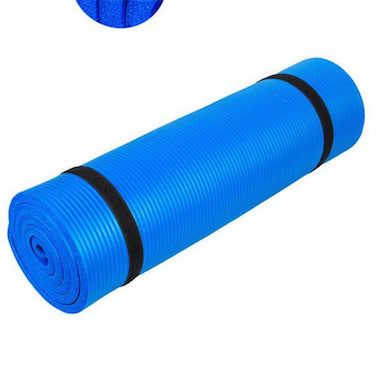
2. Exercise Ball
An exercise ball is a great piece of equipment that can help you improve your Pilates exercises and other activities. A stability ball may be used to modify Pilates postures and workouts, or as part of the workout. They may also be utilized as an alternative to a workstation chair to strengthen your core and balance while you are working.
A Pilates ball can be used as an alignment tool to ensure that the knees track over the toes in footwork or squats, and add some interesting challenges to abdominal work.
For the greatest comfort, you should get one that is appropriately sized for your height: 4’8″ – 5’3″ – 22 inch, 5’4″ – 5’10” – 26 inch, 5’11” – 6’4″ – 30 inch
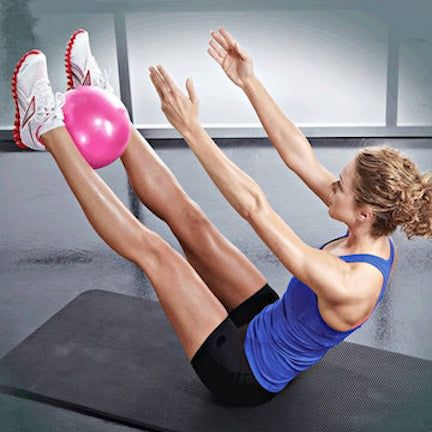
3. Resistance Bands
While you can do most pilates workouts without using exercise bands, if you want to improve your performance and strength quickly, it's a good idea to invest in a set. Resistance bands have been used for strengthening and flexibility activities since their inception as a rehabilitation equipment.
The flat ribbon-style resistance bands are most often used for pilates. These bands are composed of latex. If you have an allergy, try non-latex bands.
Resistance bands can help you take your Pilates workout to the next level. “By resisting against it, placing the band around your thighs for a bridge sequence or squat series will make your muscles work harder,” Jenny says. Bands are available in a variety of intensity levels, so you may select the proper resistance for your exercise based on the move.
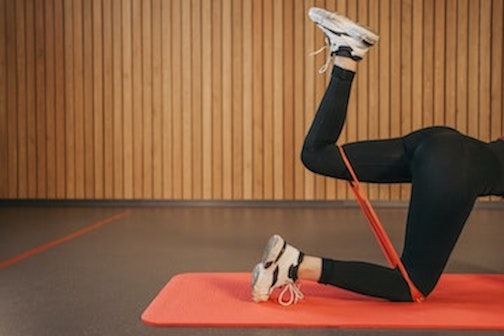
4. Pilates Ring
While you can most likely complete your preferred pilates video without one, a magic ring may take your workout to the next level. This flexible metal or plastic band is used to create moderate resistance. The use of this soft resistance allows you to focus on specific muscle groups in activities like the Standing Leg Press.
Rubber rings are more flexible, lightweight yet durable and has padding on the inside and outside of the ring so that you can perform in a variety of positions without discomfort.
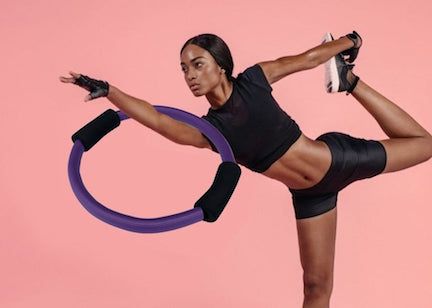
5. Water Bottle
You probably already have one, but if you don't, it's time to invest in a sturdier water bottle for yourself. Being hydrated during exercise is critical, especially when you're sweating profusely. You want your water close at hand when you're working out.
The water bottle with a motivational marker is a great option. It features a flip-top, leak-proof lid for taking a brief sip while doing pilates. The hands-strap makes it simple to transport so you can hydrate while out on hikes, at the gym, or just about any place around town.
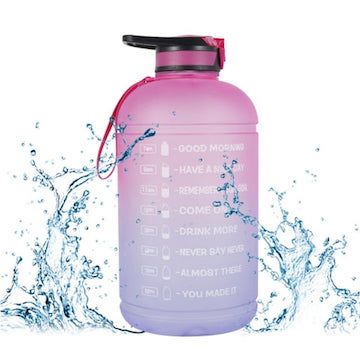
6.Leggings
Always wear seamless or compression leggings when working out, since they minimize the possibility of muscular soreness. Leggings provide greater compression and help prevent muscle soreness the next day by lowering lactic acid levels in your legs. Look for one with a higher waist and a flattering backside.
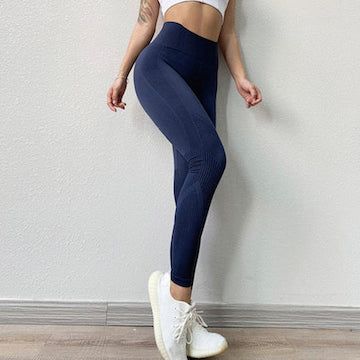
7.Grippy Socks
For many pro-Pilates, this may be true, but beginner benefit greatly from wearing a grip sock. Grippy socks are a standard part of Pilates exercise routines since they offer a sticky contact point, allowing you to avoid slipping.
They also guarantee cleanliness because they keep your feet dry. The Grippy bottom allows you to feel the bar and floor.
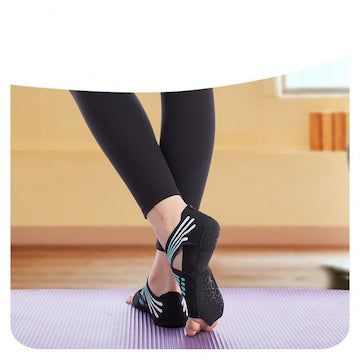
8.Wrist and Ankle Weights
Ankle weights put a strain on the quads, calves, and hamstrings, they must work harder to shift the heavier load against gravity. Use a tiny wrist or ankle weights for resistance to the upper or lower body during Pilates.
The additional weight added by the accessories makes performing each activity more difficult. They'll get things fired up with leg raises, bicep curls, and other arm workouts.
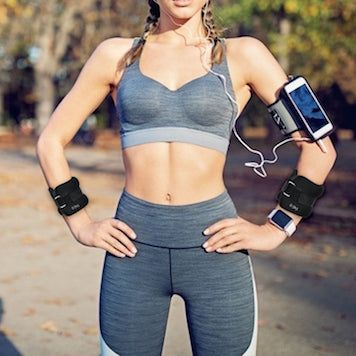
9. Foam Roller
Pilates, despite being a low-intensity workout, necessitates dedicated recuperation time. The foam roller will come in handy whenever you're feeling sore from your previous mat session.
It helps in the reduction of muscle tightness, soreness, and inflammation while also improving joint range of motion. Foam rolling may be used as a valuable addition to your warm-up or cool-down routines before and after exercise.
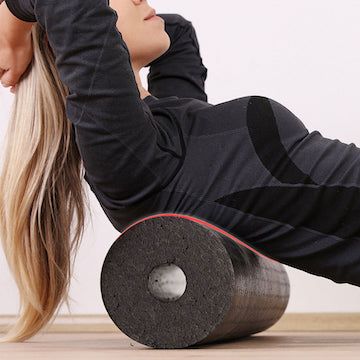
10. Pilates Bar
Pilates bars are excellent equipment for additional core targeting and dynamic exercise of the body. The bars, which are lightweight, portable, and equipped with bands for extra resistance, will add a strengthening component to your Pilates session that can help you define your muscles better.
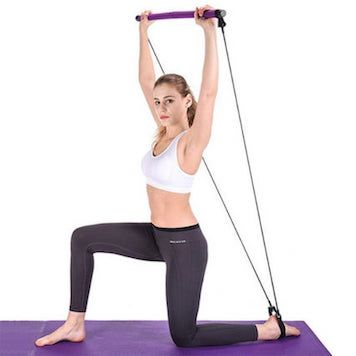
Pilates is a great way to strengthen and tone your entire body and improve your flexibility. It's also very low-impact so pilates can be done no matter what level of health you're in. Pilates exercises work well for those who are recovering from an injury as it has been shown to help reduce the risk of future injuries and helps in rehabilitation.
